Fair: Liste showtime 2020 (online)
Liste Showtime (online)
with Tanja Nis-Hansen
Tanja Nis-Hansen depicts hypnagogic states on the threshold that precedes the liquid, amniotic dissolution into dreams. Her world is a tumultuous one, full of arabesques, curls and upstrokes: the fire crackling in the hearth, the droplets falling from the sky, the magic trick of illusionist all appear to have been halted, numbed or frozen.
The perspective itself is swaying, the realm of the real dissolving, colors screaming without a sound. We are in limbo, in transit, and even the humanoid clocks and their smirking faces, a recurrent fixture in the artist’s latest body of works, obstinately point at the drowsy hour of the mid-afternoon.
Night is far away, as is its temporary solace of a halt from our daily life hassle and from society’s usual logics. At 2pm or 3pm, we can’t yet escape to sleep’s or imagination’s gentle pastures, as this is still a time that calls for production, presence and vigilance.
The curtain, that of the theater stage, has not been drawn yet: tied to the side, it reminds us of representation’s subterfuge. We remain conscious that the scene we are looking at is taking place in a fictional space, the same one we see when looking through one of the keyholes – one we do not really partake in, one that does not fully include us.
And so, the body still feels very much present, its fleshiness a burden, refusing to simply be dispelled by force of the mind. This body is a suffering one: hampered and immobilized, it is a tired or a sick one, a disabled or an ageing one.
Painted during lockdown, Tanja Nis-Hansen’s newest works clearly emphasize this dimension, indicative of the neoliberal normativity imposed on the body that requires it to be ever at work, engaged in the completion of a project or the fulfillment of a task.
The works do so by perpetuating the artist’s dissident figuration, in synch with the current reintegration of art history’s rejected margins. Anachronic as well as atemporal, the formal repertoire brings to mind the distorted shapes and acid tones of countercultural or vernacular culture of a recent past, ripe however with darker, murky and discordant undertones.
What we perceive here, through a visual language rejecting modernity’s fetish for transparence and clear lines, is a familiar feeling. That of the throes of the conflicted present-day individual, crushed by a rationalized, quantified and data-centered approach to physical and mental health, yet striving to let loose an incandescent longing for another kind of fulfillment – empathic, spiritual and libidinal.
– Ingrid Luquet Gad
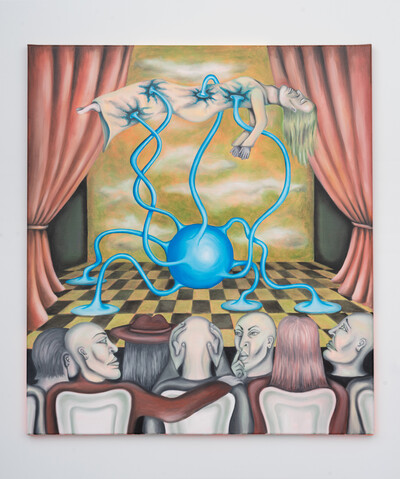
Tanja Nis-Hansen, The lady is seemingly floating, 2020, oil and acrylic on canvas, 80 × 70 cm, unique
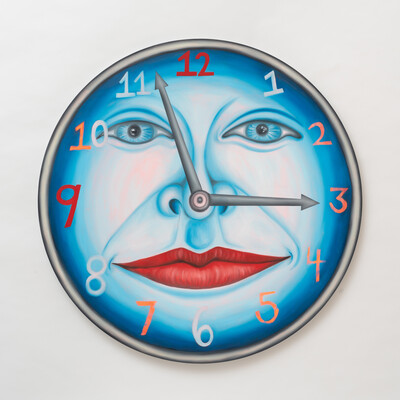
Tanja Nis-Hansen, I’m a patient girl, 2020, oil and acrylic on canvas, ø 90 cm, unique
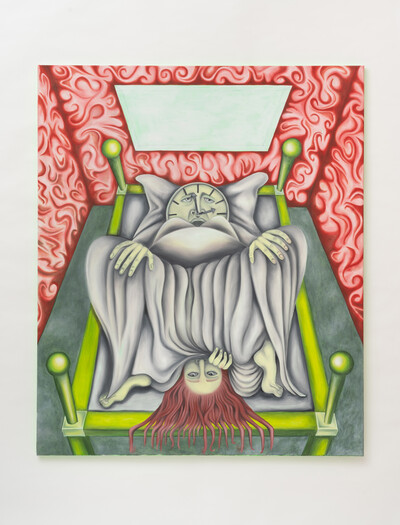
Tanja Nis-Hansen, Self-Portrait as the Allegory of Painting, 2020, oil and acrylic on canvas, 120 × 100 cm, unique
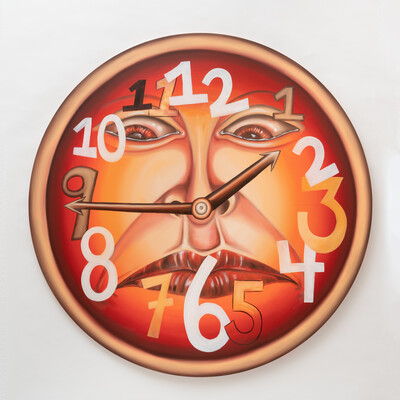
Tanja Nis-Hansen, Death Watch or 45 minutes of solitude but now it’s a quarter to 2, 2020, oil and acrylic on canvas, ø 120 cm, unique
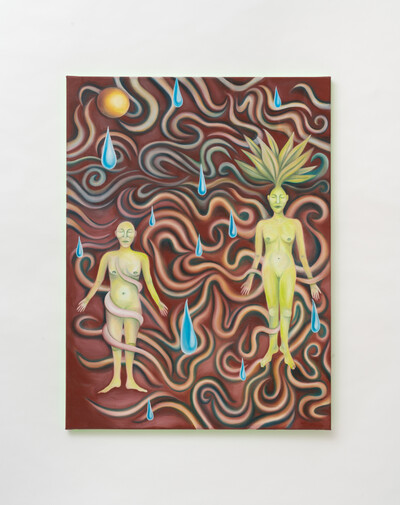
Tanja Nis-Hansen, Body’s in trouble (2), 2020, oil and acrylic on canvas, 80 × 60 cm, unique
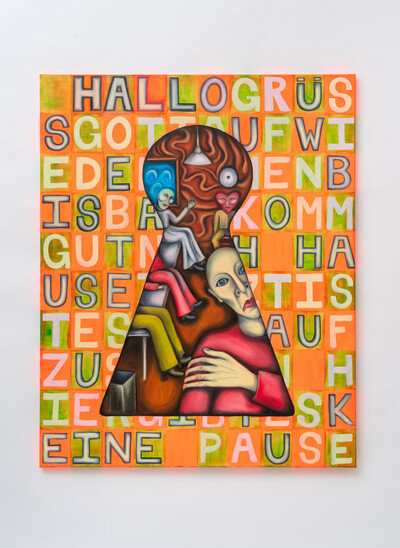
Tanja Nis-Hansen, Hallogrüssgottaufwiedersehenbisbaldkommgutnachhausejetzt-isteszeitaufzustehenhiergibteskeinepause, 2020, oil and acrylic on canvas, 100 × 80 cm, unique
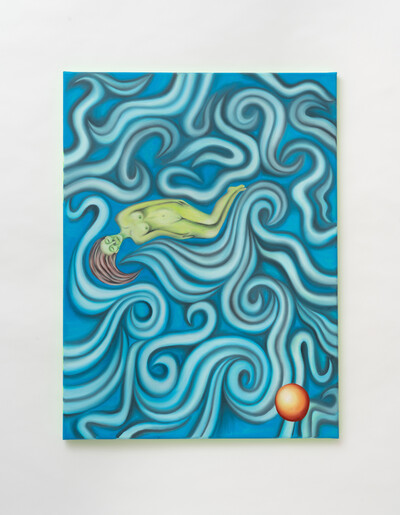
Tanja Nis-Hansen, Body’s in trouble (1), 2020, oil and acrylic on canvas, 80 × 60 cm, unique